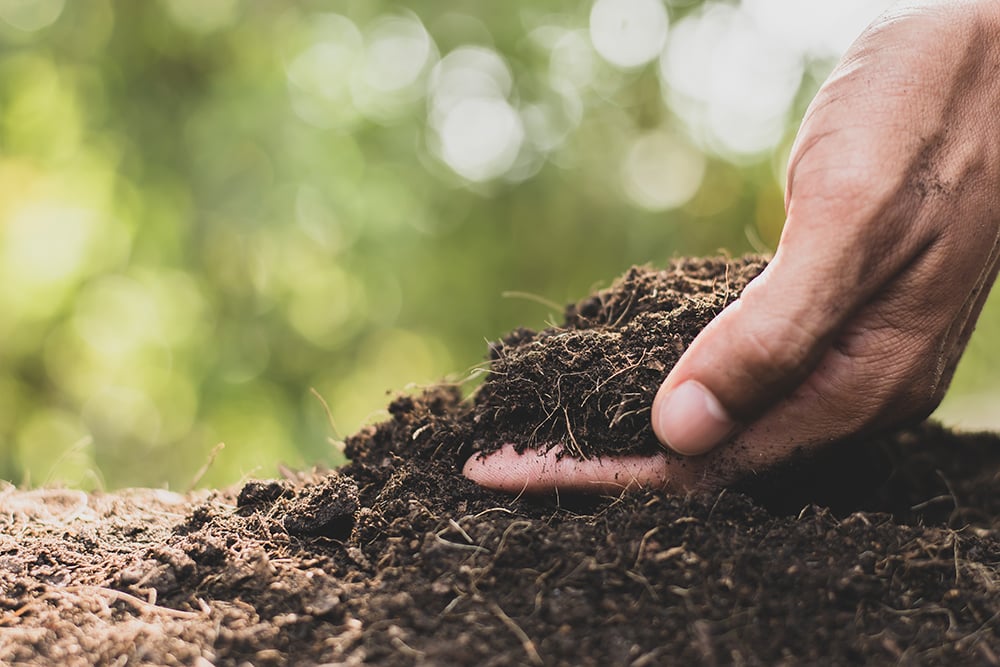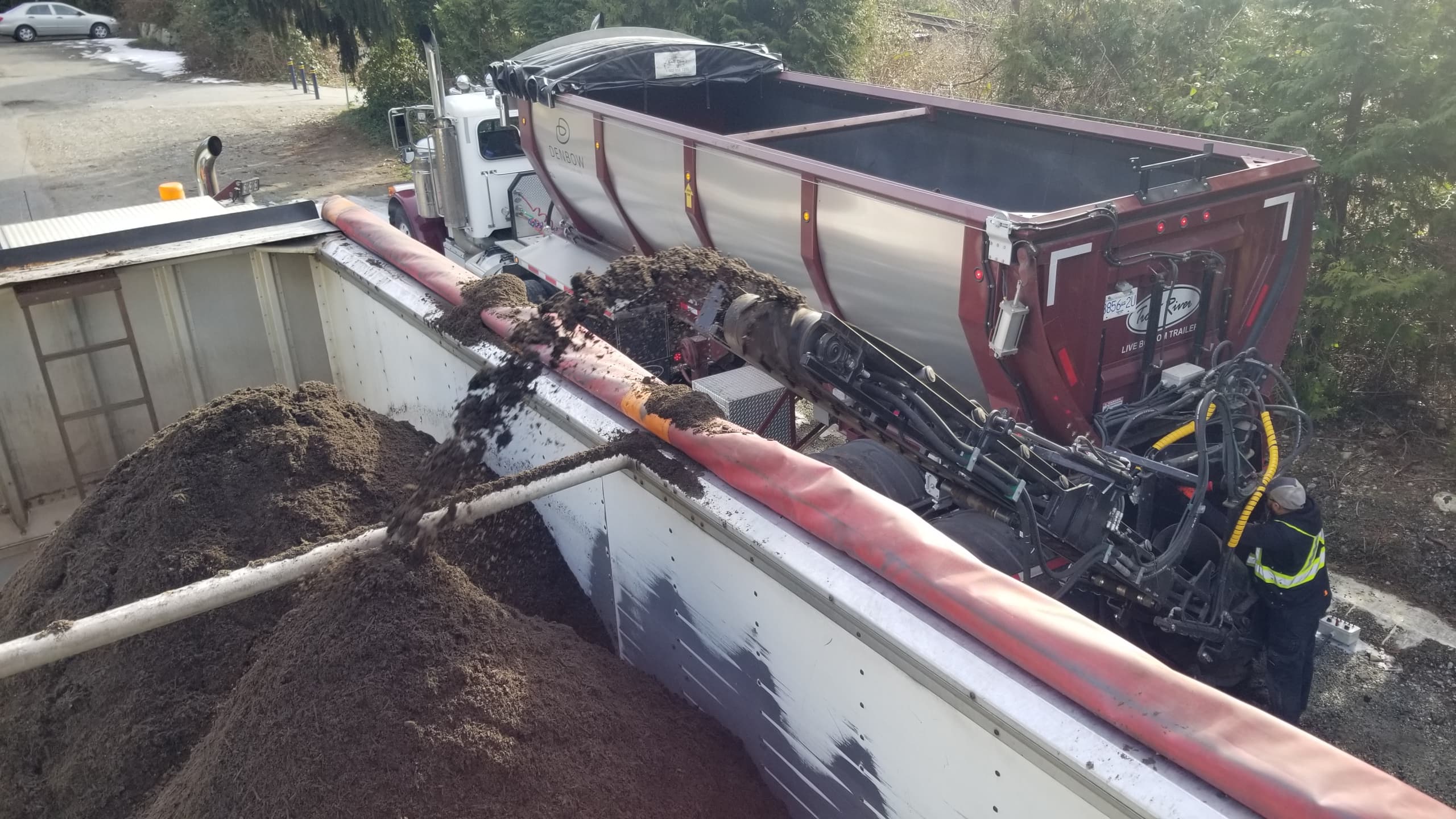As spring planting begins in landscaping and gardens, it's a good idea to consider some drought resistant plants as a part of the plan. Joan Clark from TipsBulletin.com has a list to explore...
"13 Amazing Drought Tolerant Plants"
When you hear the term drought-tolerant plants, you might imagine only cacti or succulents. But there are colorful shrubs, flowering vines, and grasses that are very drought-resistant plants, too. They will make your yard the envy of the neighborhood during the next dry spell.
For example, brighten up a rock wall with one of the most drought tolerant plants, the rose moss. And let jasmine and lilac perfume your garden. Or spruce up a patio with geraniums and blue daisies in containers. Yes, you can make your yard a paradise without running up the water bill this year.
Drought Tolerant Plants
Check with your local garden center to find out which of these treasures grow best in your area. Plus, you can raise many of them from seeds if you start them indoors. Overall, many of them will bloom for years to come.
Portulaca Grandiflora or Rose Moss
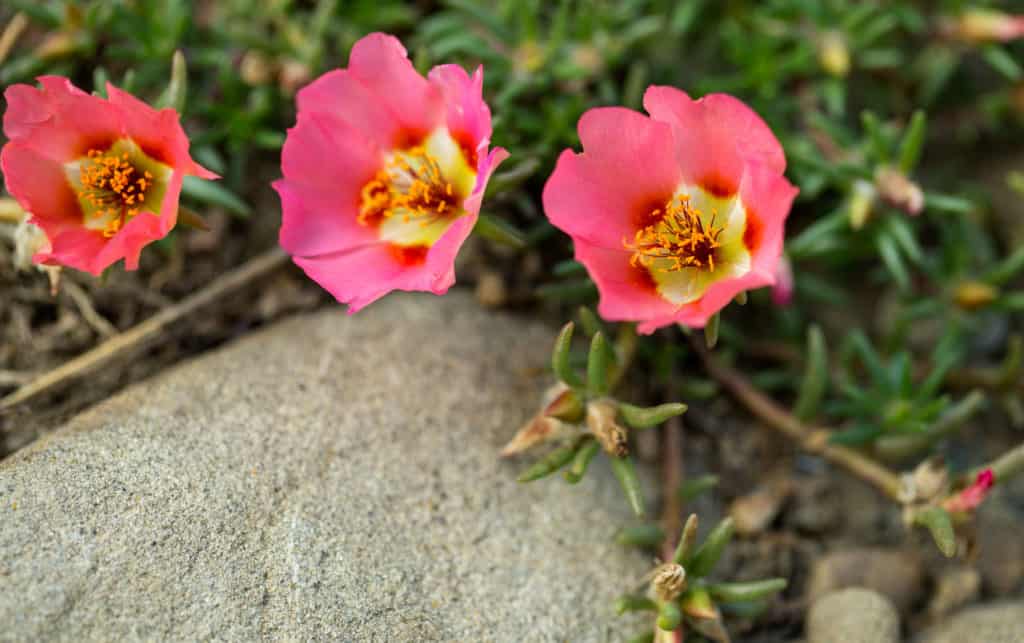
Rose moss blooms all summer long until the first frost. Its red, orange and yellow flowers love hot sunshine so much they don’t open on rainy days. And this annual from South America doesn’t need much water or care to thrive. It even self-seeds.
Gardeners appreciate Portulaca grandiflora for being one of the most beautiful ground cover plants, perfect for covering rock walls and alongside pathways. Each plant grows up to eight inches tall and about a foot wide.
Pelargonium Odoratissimum or Apple Geranium
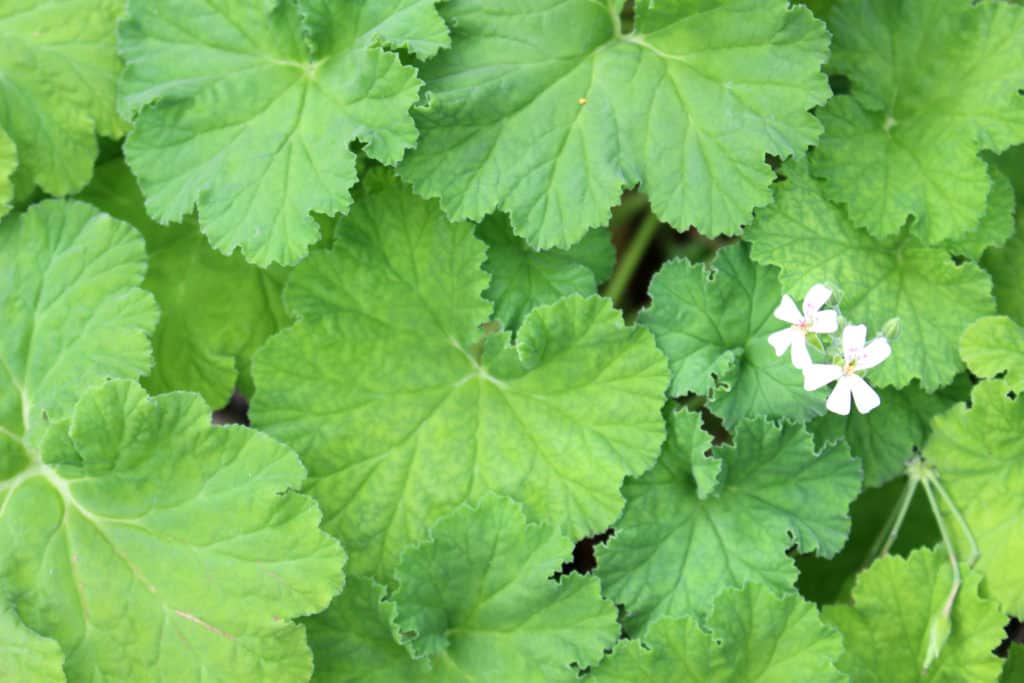
Most varieties of geranium grow well in hot weather with infrequent watering. That’s why flower shops recommend them as gifts. They can live for decades and start new plants from their cuttings.
The apple geranium, or Pelargonium odoratissimum, one of the most drought-tolerant plants, is a fragrant type with small star-shaped blooms with purple, pink, or white petals. It flowers throughout spring and summer. At that time it needs moderate watering, but almost none at all during the winter.
Trumpet Vine or Campsis Radicans
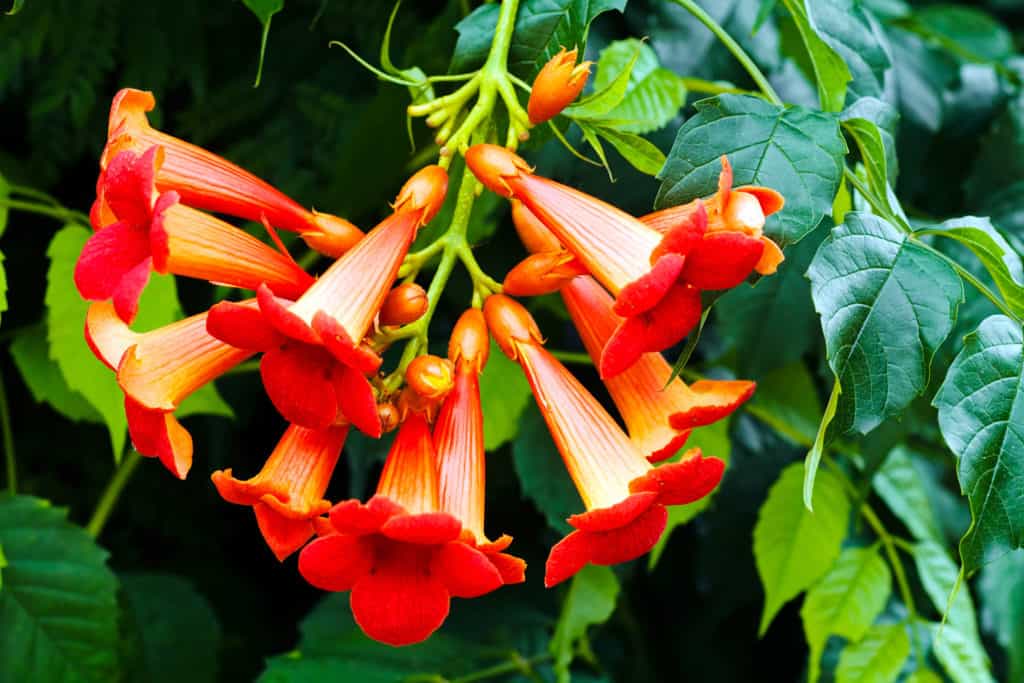
If you’re battling erosion on a hillside, plant trumpet vine there. It also looks excellent decorating a fence. But keep it away from the siding on a house because it’s runners will cause damage. If cut regularly, it is also one of the most beautiful hanging plants for baskets. Trumpet vines are hardy plants that spread aggressively and live for decades. And although they die back each winter, they’re quick to spring back to life in the spring.
Campsis radicans is a fast climber that grows well in poor soil and full sunlight. When it blooms in springtime, it produces yellow, orange, and red flowers. And the blossoms attract hummingbirds, too.
Wild Lilac or Ceanothus
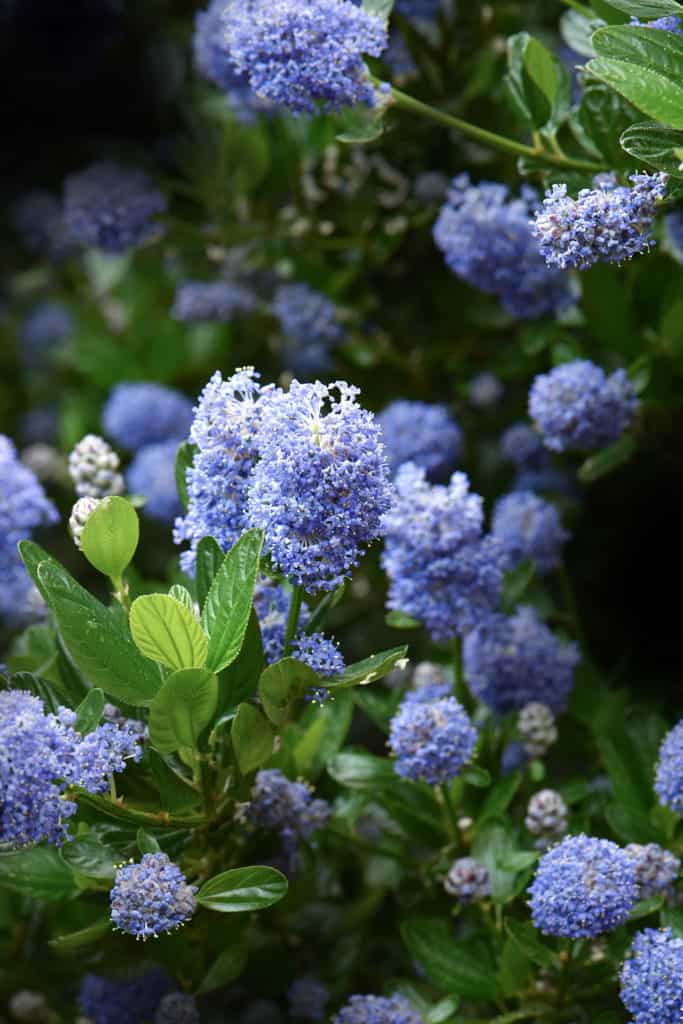
Remember how Americans dumped British tea overboard in the Boston Harbor? During the American Revolution, there wasn’t much black tea to go around. But people improvised with the leaves of the wild lilac plant.
Ceanothus shrubs are very drought tolerant plants except for their first summer. They can live up to twenty-five years, but their seeds are viable for more than a hundred years. And their fragrant blooms last anywhere from 2 to 6 weeks, depending on the variety.
Jasmine
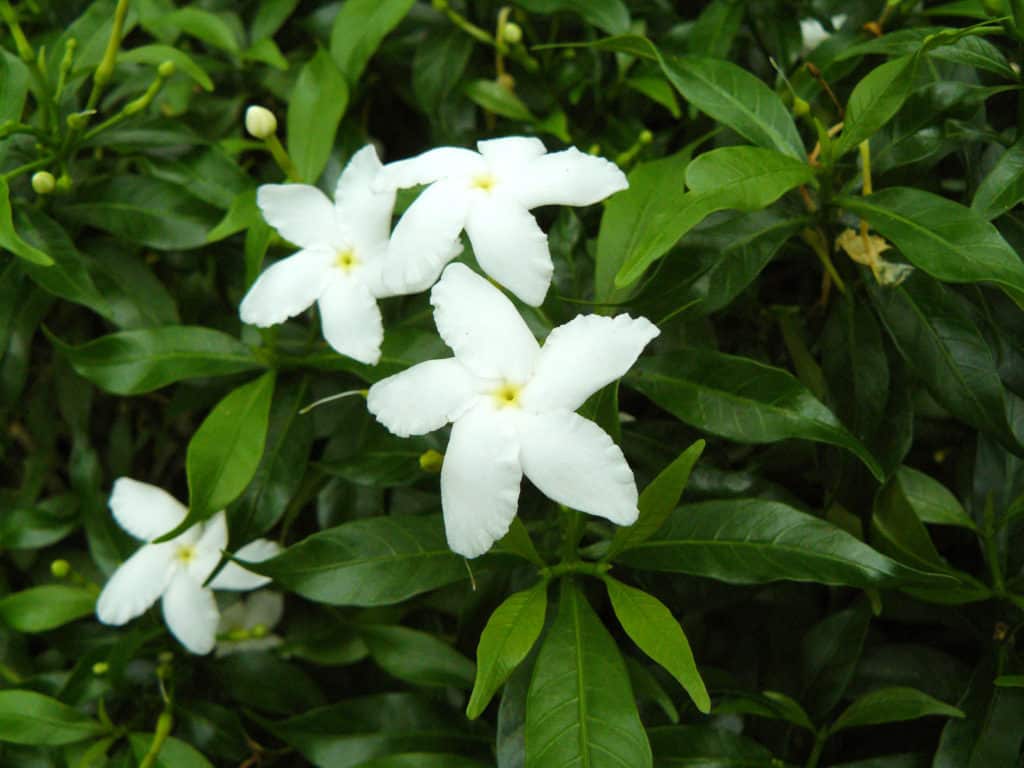
Common jasmine, or jasmine officinale, is the national flower of Pakistan. This Asian plant smells best at twilight. Its oil appears in perfumes, candies, and alcohols. The oil is also reported to be an aphrodisiac that relieves depression and stress.
Jasmine is a vining shrub that begins to bloom in the springtime and continues to produce flowers into the fall. It likes full sunlight or partial shade and well-drained soil.
Verbena Bonariensis or Argentinian Vervain
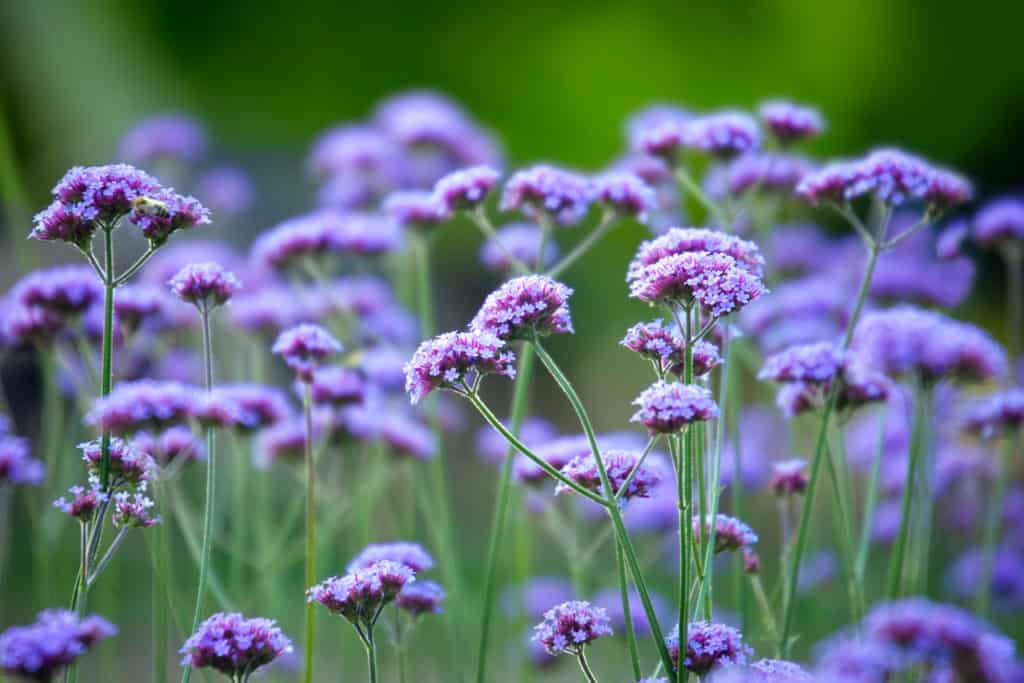
Vervain’ purple flowers appear throughout the summer into autumn. It’s a native of South America that prefers well-drained soil and bright sunlight. It is a popular natural pest control plant as it fights the fungus gnat larvae. While it requires pruning, it’s usually resistant to diseases and pests. Furthermore, it attracts pollinating insects like bees and butterflies.
You’re likely to see vervain planted in cottage gardens and along borders. It self-seeds, which can turn it into an invasive plant if the flowers aren’t pinched off or dead-headed.
Aloe Vera – Drought Resistant Plants

No article about drought-resistant plants would be complete without aloe. But did you know that aloe comes in different varieties besides the medicinal houseplants that clean the air? For example, aloe arborescens, or candelabra aloe, reaches ten feet in height. It also sprouts bright red flowers.
Meanwhile, variegated tiger aloe is an attractive addition to outdoor flower beds. And both carmine and sunset aloe are red, not green. Best of all, many varieties have health benefits like aloe vera.
Fountain Grass or Pennisetum Setaceum
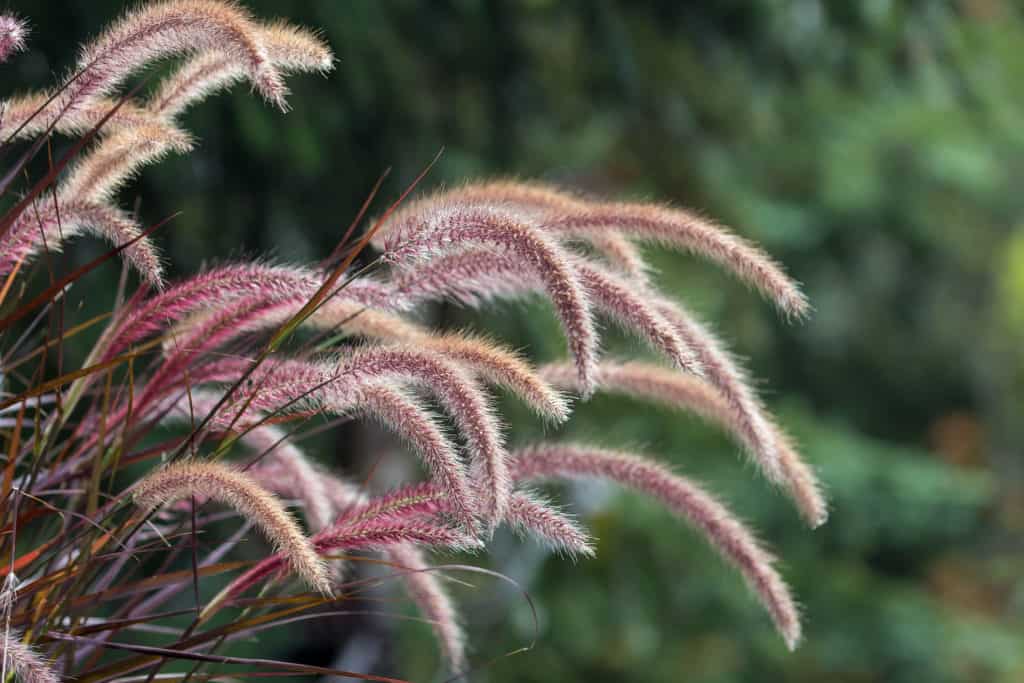
The ultimate plant for dry conditions may be fountain grass. It doesn’t require watering to thrive. This dense green and purple grass grows in clumps that reach five feet tall. And its tips feather out into pinkish plumes before it produces seeds.
Should you irrigate Pennisetum setaceum, its colors deepen, and its foliage shines. Besides placing it besides water features or along fences, it also performs well in containers.
Felicia Amelloides or Blue Daisy
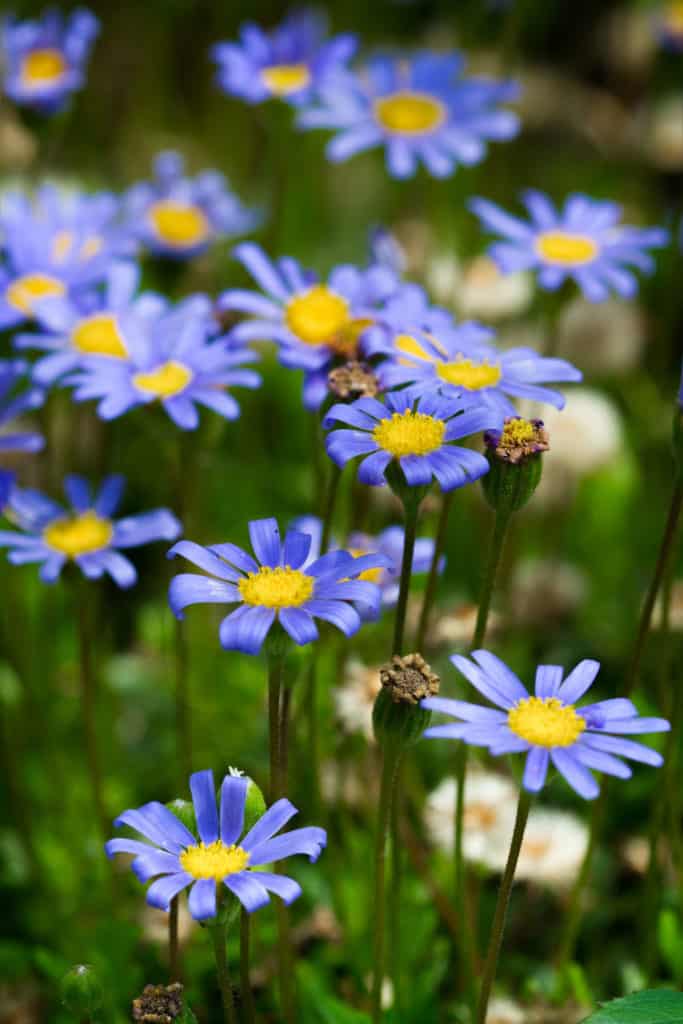
Blue daisies, specifically the Santa Anita Variegated variety, are annual shrubs that bloom throughout the summer. If you pinch back young shoots, they branch out into bushes. And Felicia isn’t picky about soil as long as it’s well-drained and it has plenty of light.
These fast-growing plants make a lovely blue carpet in beds. Or they grow well in containers, too. Their maximum height is just ten inches, perfect for the ground cover.
Drosanthemum
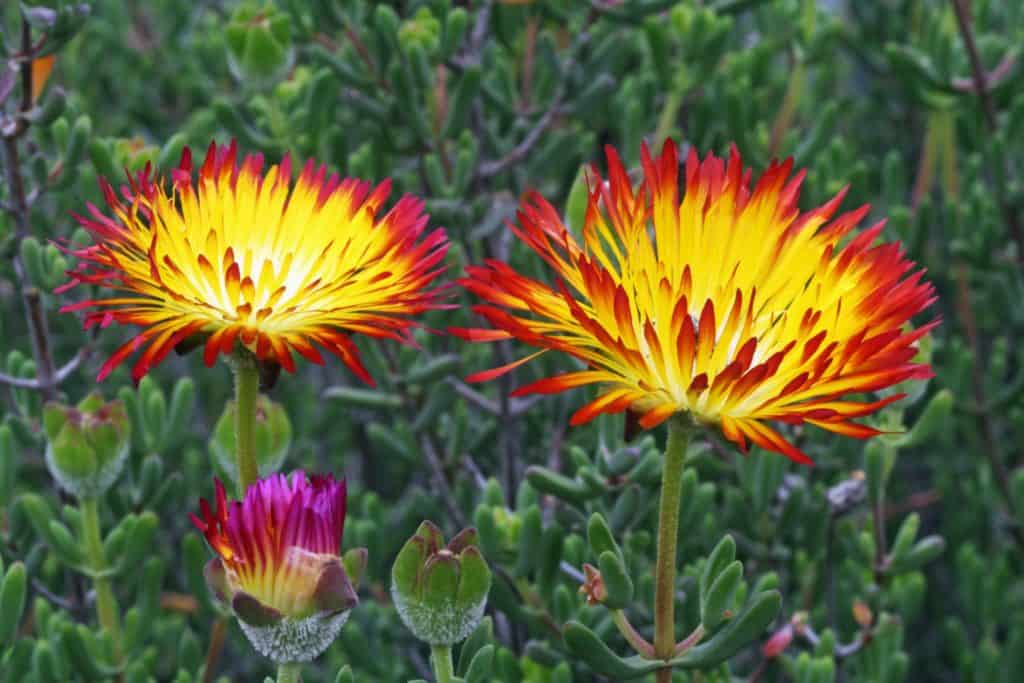
It’s ironic that Drosanthemum is part of the ice plant family since it’s a native of southern Africa where one would not anticipate cold weather. It is one of the most tolerant and resistant plants around. But this is a flower that needs cool weather in the winter to be at its best blooming in the summer.
Keep the drosanthemum well-drained sandy soil with bright sunshine. Although it needs more water while it’s flowering, it won’t need much moisture at all in the winter. If you provide the minimum care it needs, drosanthemum will live for years.
Catmint or Nepeta
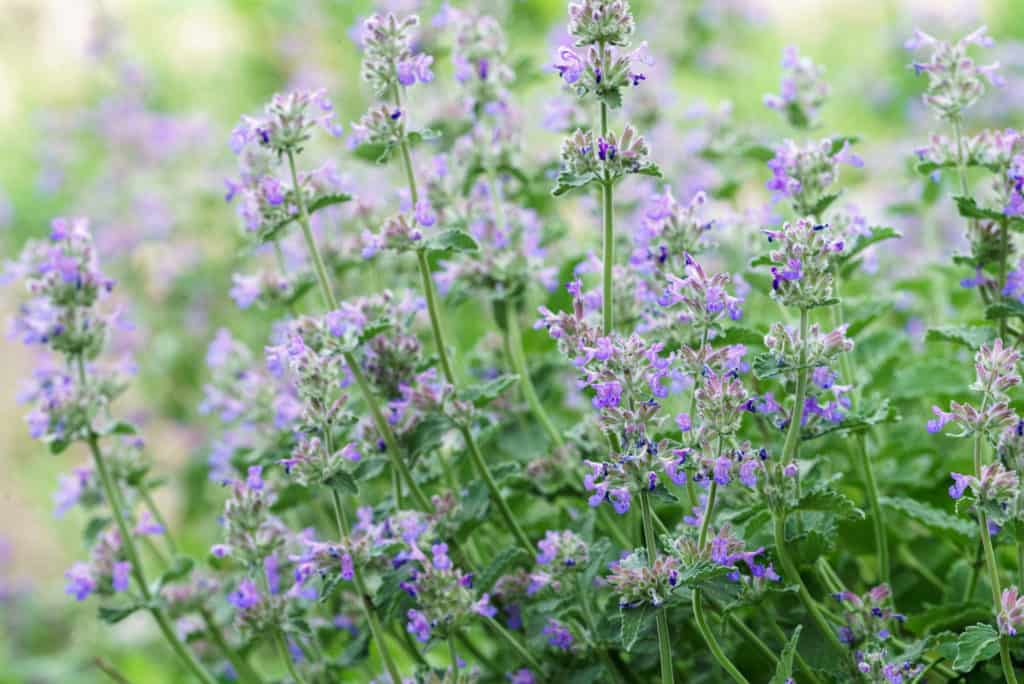
Catmint belongs to the mint family and is closely related to that feline favorite, catnip. But catmint is an aromatic ornamental plant that’s irresistible to butterflies and bees, not just cats. It flowers from early summer until the beginning of autumn.
If you can give Nepeta at least a half-day of sunshine, it will reward you with lots of elegant little blue blossoms. It can thrive in almost any kind of soil and with very little water.
Echeveria
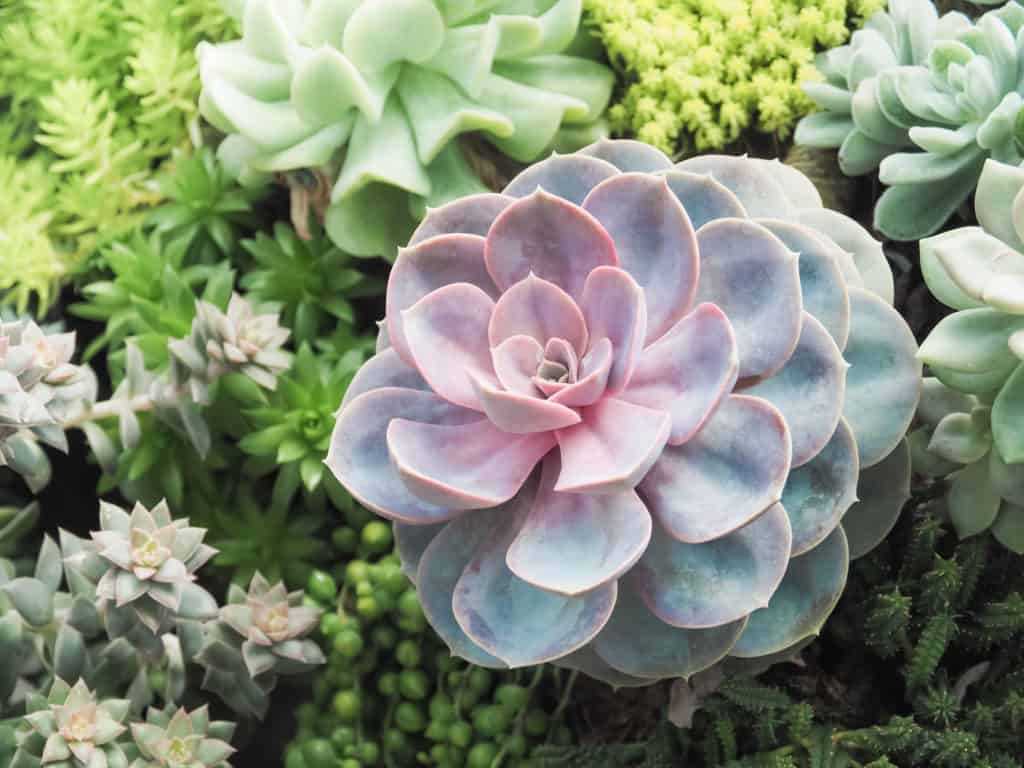
Of course, succulent plants are simple to nurture in drought conditions. Echeveria is a family of succulents with fleshy rosette leaves. Some are a bright green while others have reddish tips. Some reach up to a foot in width, but most are smaller in diameter. And they can propagate from a single leaf.
Let the soil dry out between waterings to avoid root rot. And if you grow Echeveria in containers, use cactus potting soil for best results.
Colorful Drought Resistant Plants: Lavender
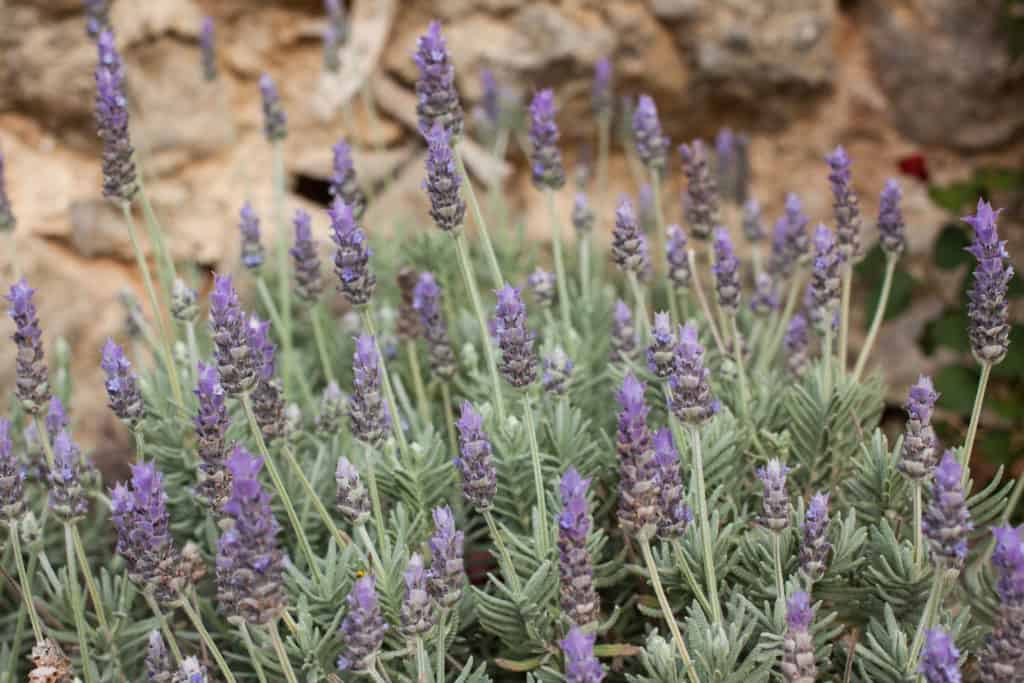
Our final pick for plants that flourish in dry conditions is lavender. These aromatic evergreen shrubs grow in the fields of France as well as parking lot planters in southern California. Plus, it is one of the best mosquito repelling plants and can serve as a border or hedge or accent a container garden.
If you cultivate lavender, you’ll enjoy benefits beyond its beauty. First, its scent repels predatory insects. Second, its flowers are a tasty complement to mint in teas. And third, it’s a natural air freshener even when it’s dried.
We’re fans of drought resistant plants like lavender, geraniums, fountain grass, and aloe. Not everyone realizes how easy it is to care for them.
As you saw, there are many hardy flowers, bushes, and vines that provide striking accents for beds, walkways, and walls.
Original Article by Joan Clark, used with permission
